The German occupation of Norway during World War II was a dark chapter in the nation’s history. Caught off guard by the swift Nazi invasion, Norwegians endured harsh living conditions, food shortages, and oppressive regulations. Yet, amidst this turmoil, a resistance movement emerged, engaging in acts of sabotage against the occupying forces. The psychological toll of collaboration and repression only added to the complexity of this "Unknown War." Exploring this turbulent period provides valuable insights into Norway’s national identity and the lasting impact of WWII on its society and culture.
Good To Know
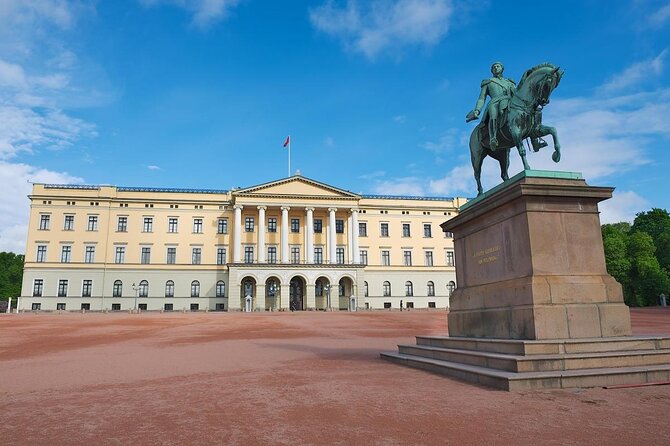
- Norway’s neutrality was violated in 1940 when Germany swiftly invaded and occupied the country, establishing a puppet government and suppressing resistance movements.
- The occupation of Oslo marked the start of a dark period in Norwegian history, characterized by curfews, rationing, and the Gestapo’s oppressive presence.
- The Norwegian Resistance, known as the Hjemmefront, conducted sabotage operations and intelligence efforts to undermine the Nazi occupation and preserve national identity.
- The occupation left a lasting psychological impact on Norway, as the country faced widespread destruction, displacement, and the suppression of cultural and social activities.
- Norway’s strategic location became vital in the postwar geopolitical landscape, leading to its inclusion in the NATO alliance and the transition from an occupied nation to a key Western partner.
Nazi Occupation of Norway
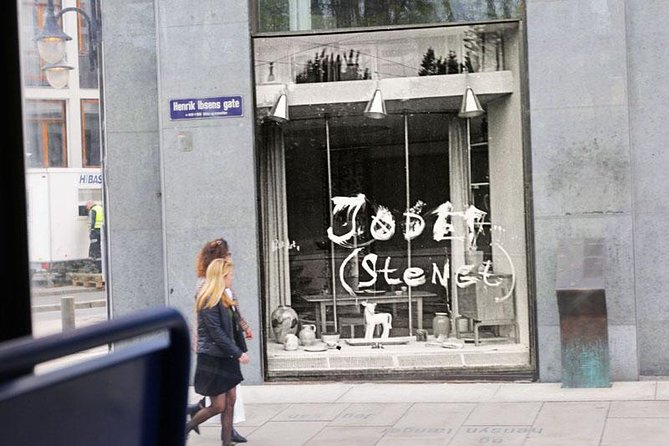
Although Norway was a neutral country during World War II, Germany invaded and occupied the nation in 1940, marking the beginning of a brutal five-year occupation that would dramatically reshape the country.
Despite fierce resistance from Norwegian forces, the Nazis quickly conquered Oslo and other major cities, establishing a puppet government led by Vidkun Quisling.
The occupation had a devastating impact on Norway’s economy, infrastructure, and civilian population. Thousands of Norwegians were killed, imprisoned, or deported to concentration camps.
The Norwegian Resistance movement emerged as a formidable force, carrying out sabotage and guerrilla operations against the German military.
Ultimately, the occupation left a deep scar on the Norwegian psyche, one that continues to shape the nation’s historical memory and identity.
You can also read our reviews of more tours and experiences in Oslo.
German Invasion and Oslo Takeover
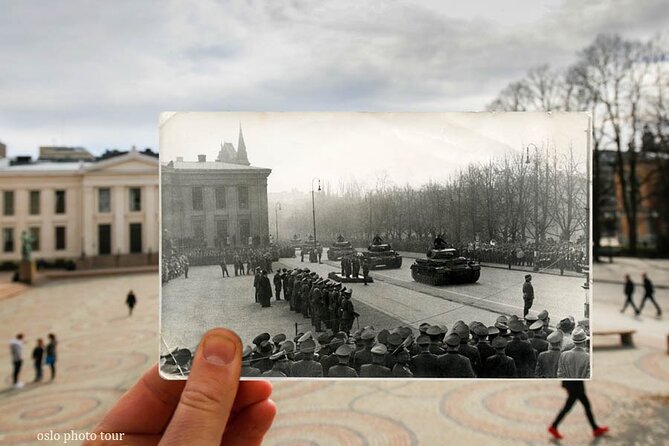
On April 9th, 1940, Germany launched its invasion of Norway, quickly overwhelming the country’s defenses and seizing control of the capital city of Oslo. Within a matter of days, the German forces had occupied strategic locations throughout the city, including:
-
The Royal Palace, where King Haakon VII and the Norwegian government were forced to flee.
-
The Akershus Fortress, a medieval castle that became a key administrative center for the Nazi occupation.
-
Numerous government buildings and transportation hubs, allowing the Germans to tighten their grip on the city.
-
The headquarters of the Norwegian military, which was quickly subdued by the invading troops.
This swift and decisive German victory marked the beginning of a dark chapter in Norway’s history, as the nation struggled to resist the Nazi occupation for the next five years.
Everyday Life Under Occupation
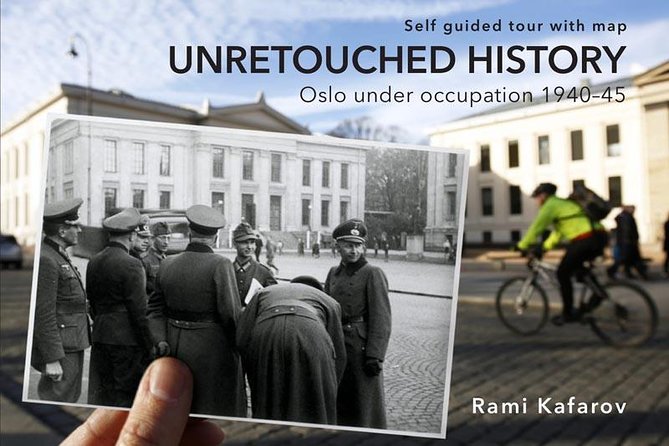
For the Norwegian people, daily life under the German occupation was a constant test of resilience and survival. The Nazis exerted tight control over the city, imposing curfews, rationing, and strict regulations that profoundly impacted the routines and freedoms of Oslo’s residents.
Food shortages were common, forcing Norwegians to queue for basic necessities and rely on black markets to supplement their meager rations. The Gestapo’s watchful presence instilled fear, and the city’s vibrant cultural life was suppressed, with cinemas, theaters, and other entertainment venues forced to close.
Yet, despite the hardships, Norwegians found ways to resist, organizing underground networks and engaging in acts of passive defiance that chipped away at the occupiers’ control.
Resistance and Collaboration in Norway
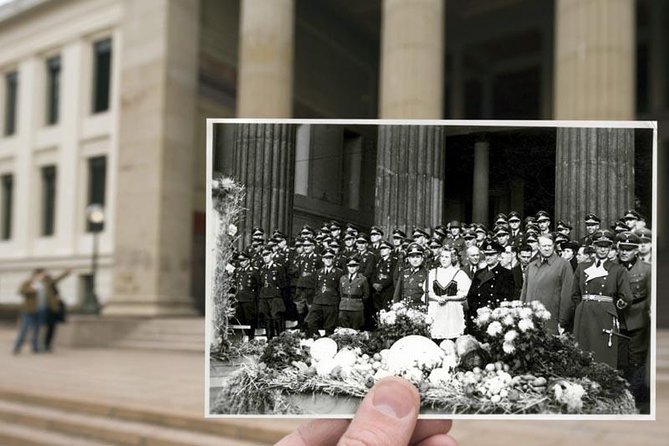
Amidst the crushing grip of Nazi occupation, Norwegians engaged in both covert resistance and, in some cases, uneasy collaboration with the German authorities. The Norwegian resistance movement, known as the Hjemmefront, undertook daring sabotage operations, intelligence gathering, and rescue missions to aid the Allied war effort.
Meanwhile, a small minority of Norwegians, driven by nationalist or anti-communist sentiments, cooperated with the occupiers. The fascist Vidkun Quisling government maintained an oppressive regime in Norway throughout the war. Norwegian businessmen and industrialists collaborated with German companies, profiting from the occupation. Some Norwegians joined the Waffen-SS or the pro-Nazi party Nasjonal Samling.
However, the vast majority of Norwegians resisted the Nazi yoke through passive and active means, preserving their national identity and paving the way for liberation.
Destruction and Devastation Across Norway
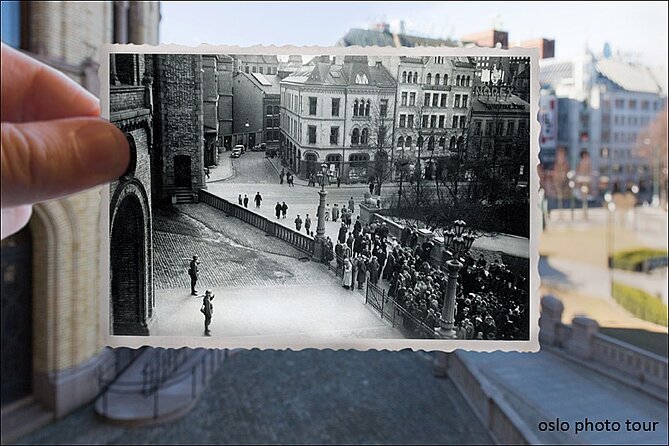
Ravaged by the relentless Nazi onslaught, Norwegian towns and cities bore the brunt of devastating bombings, with historic landmarks reduced to rubble and countless civilian lives lost.
The northern town of Kirkenes, for instance, was systematically decimated by repeated German air raids, its once-thriving port and harbor left in ruins.
Across Norway, the retreating Wehrmacht destroyed bridges, railways, and critical infrastructure, crippling the nation’s economy and transportation networks.
Even Oslo, the capital, wasn’t spared the horrors of war, as the Nazis ruthlessly targeted key government buildings and military installations.
The scale of destruction was staggering, a testament to the brutality of the German occupation and the immense suffering endured by the Norwegian people.
Impact on Norwegian Society and Culture
The Nazi occupation of Norway profoundly impacted the country’s social fabric and cultural identity, as the German regime sought to exert control over every aspect of Norwegian life. This manifested in several key ways:
-
Suppression of national pride and free expression, with the banning of the Norwegian flag, national anthems, and other cultural symbols.
-
Forced Nazification of schools, media, and other institutions, aiming to indoctrinate the population.
-
Harsh crackdowns on dissent and resistance, including mass arrests, torture, and executions of those deemed ‘enemies of the Reich.’
-
Widespread disruption to daily life, with food rationing, housing shortages, and the displacement of thousands of Norwegians.
Establishment of NATO and Significance
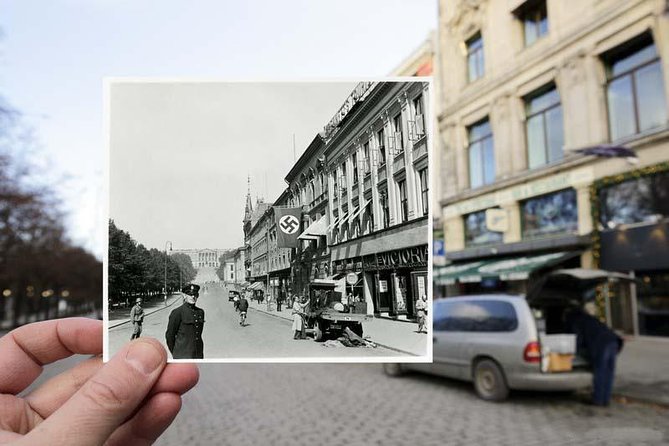
As the Norwegian people grappled with the aftermath of the Nazi occupation, the hotel of the North Atlantic Treaty Organization (NATO) in 1949 emerged as a crucial milestone in the country’s postwar history. NATO’s formation not only solidified Norway’s commitment to collective defense against potential future aggression, but also reflected the nation’s strategic importance in the evolving geopolitical landscape of the early Cold War era. The creation of NATO marked a significant shift in Norway’s security posture, transforming it from an occupied nation into a key partner in the Western alliance against the Soviet threat. This alliance would have lasting implications for Norway’s sovereignty, economic development, and international influence in the decades that followed.
| Significance of NATO Establishment for Norway | ||
|---|---|---|
| Collective Defense | Strategic Importance | Postwar Security Posture |
| Solidified Norway’s commitment to mutual defense against future aggression | Reflected Norway’s strategic location in the evolving Cold War geopolitics | Transformed Norway from an occupied nation to a key partner in the Western alliance |
Exploring WWII’s Legacy in Oslo
Amidst the scars left by the Nazi occupation, Oslo’s cityscape bears witness to the resilience and determination of the Norwegian people during the tumultuous years of 1940-1945. Guided tours explore the city’s complex history, uncovering the stories of resistance, collaboration, and the lasting impact on the capital’s architectural and cultural fabric.
These tours highlight:
-
The Royal Palace, where the Norwegian monarchy refused to abdicate and stood firm against German demands.
-
Akershus Castle and Fortress, a symbol of Norway’s struggle for independence and a key strategic location during the occupation.
-
The historical center, where remnants of wartime Oslo serve as a poignant reminder of the sacrifices made by its citizens.
-
The Resistance Museum, which offers a profound insight into the nation’s fight for freedom.
Frequently Asked Questions
How Were Norwegian Jews Impacted During the German Occupation?
Norwegian Jews faced severe persecution during the German occupation. Many were arrested, deported, and killed in Nazi concentration camps. The occupation devastated the Norwegian Jewish community, with over 700 Jews murdered or sent to their deaths.
What Role Did the Norwegian Royal Family Play During the War?
The Norwegian royal family played a crucial role during the German occupation. They refused to collaborate with the Nazis and instead became symbols of Norwegian resistance, eventually fleeing to exile in London before triumphantly returning after the war’s end.
What Were the Living Conditions Like in Occupied Oslo?
The living conditions in occupied Oslo were harsh. Rationing of food and supplies was severe, and the city suffered from shortages and high prices. Norwegians faced restrictions on movement and expression, with the threat of arrest and imprisonment by the German authorities.
How Did Rationing and Shortages Affect Daily Life for Norwegians?
Rationing and shortages severely impacted daily life for Norwegians during the occupation. Food, fuel, and other essential goods were strictly limited, leading to hardship and deprivation. Citizens had to adapt their habits and routines to cope with the scarcity.
What Was the Experience of Norwegian Women During the Occupation?
Norwegian women faced significant challenges during the occupation. Many were forced into domestic service or sexual exploitation by German soldiers. Others played active roles in the resistance, risking their lives to support the fight for Norwegian independence.
Sum Up
The German occupation of Norway from 1940 to 1945 marked a tumultuous period that transformed daily life and shaped the nation’s identity.
Norwegians faced brutal conditions, food shortages, and oppressive regulations, while the resistance movement conducted daring sabotage operations.
This turbulent time left a lasting impact on Norwegian society and culture, and contributed to the hotel of NATO, solidifying its role in the post-war geopolitical landscape.
More Tour Reviews in Oslo
Not for you? Here's more things to do in Oslo we have recnetly reviewed
- 2 Best Canoe And Kayak Experiences In Oslo
- 4 Best Dining Experiences In Oslo
- 4 Best Dinner Tours In Oslo
- 8 Best Canoe And Kayak Experiences In Oslo
- 25 Best Cruises And Boat Tours In Oslo
- 5 Best Food Tours In Oslo
- 2 Best Full-Day Tours In Oslo
- Vigeland Alien Threat Quest Experience in Oslo
- Myths and Legends of Oslo
- Top of Oslo/Starlight Evening Snowshoeing Tour(s)
- Oslo Private Tour: Nydalen, Akerselva River, Bygdøy Peninsula & Kon-Tiki Museum
- Departure Private Transfer From OSLo to OSLo Airport OSL by Business Car
